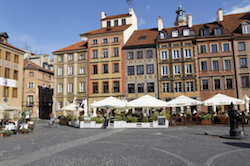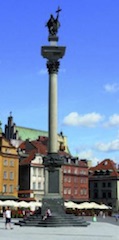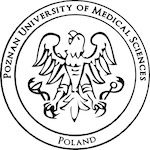About Warsaw
 Warsaw, nurturing over 400 years of pride as a capital, is Poland´s largest city and an economic, political, and cultural centre. The symbol of the city is the Mermaid, featured on the city seal. Warsaw is a bustling metropolis and features an unforgettable history. A city where a fourth of the terrain is covered by parkland and a city of culture for all tastes and budgets.
Warsaw, nurturing over 400 years of pride as a capital, is Poland´s largest city and an economic, political, and cultural centre. The symbol of the city is the Mermaid, featured on the city seal. Warsaw is a bustling metropolis and features an unforgettable history. A city where a fourth of the terrain is covered by parkland and a city of culture for all tastes and budgets.
 Although the beginnings of Warsaw go as far back as the 12th and 13th century Warsaw was forced to completely rebuild after the near-total destruction of the city during World War II. The symbol of the capital´s rebirth was an unprecedented post-war re-creation of the Old Town, which in 1980 was put on the UNESCO list of World Heritage Sites, as an example of a nearly complete reconstruction of the original settlement using original town plans and architecture.
Although the beginnings of Warsaw go as far back as the 12th and 13th century Warsaw was forced to completely rebuild after the near-total destruction of the city during World War II. The symbol of the capital´s rebirth was an unprecedented post-war re-creation of the Old Town, which in 1980 was put on the UNESCO list of World Heritage Sites, as an example of a nearly complete reconstruction of the original settlement using original town plans and architecture.
 On the other hand, the Palace of Culture and Science, which overlooks the city, is just the opposite in terms of ensuring historical continuity of the city. This unparalleled building, which is an example of socialist realist architecture, represents an icon of communism and enslavement. Today, it is one of Warsaw´s youngest monuments, and like the Old Town, is a tourist attraction.
On the other hand, the Palace of Culture and Science, which overlooks the city, is just the opposite in terms of ensuring historical continuity of the city. This unparalleled building, which is an example of socialist realist architecture, represents an icon of communism and enslavement. Today, it is one of Warsaw´s youngest monuments, and like the Old Town, is a tourist attraction.
Throughout history Warsaw has always been a centre of important events and activities. Its exceptional vitality and capital status has always been the driving force to strive for and develop new aspirations and where new concepts and ideas are born. Warsaw is testimony to remarkable heroism, commitment and national pride.
 Warsaw has existed for several hundred years. Once called "the Paris of the North", like the mythical Phoenix, it rose from the ashes after total devastation.
Warsaw has existed for several hundred years. Once called "the Paris of the North", like the mythical Phoenix, it rose from the ashes after total devastation.

